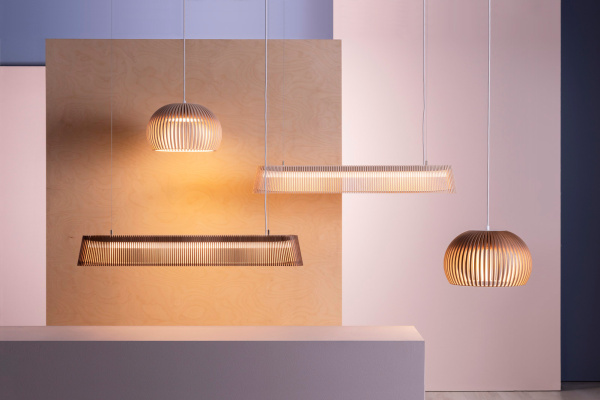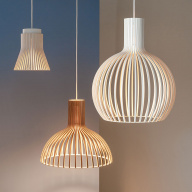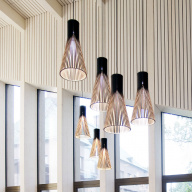Understanding light bulbs
When choosing what kind of light source to purchase, there are many different aspects to consider. One of the most important aspects is the actual light bulb itself. What do LED and Watt actually mean, and which light bulbs fit which bases? In this article, some of the most common terms are explained regarding the actual bulbs used in lamps. These terms show up on most LED bulb product information packaging.
LED
Today almost all light bulbs that are sold are LED bulbs. LED stands for light emitting diode. This, in simple terms means that the light is produced by passing electricity through a diode (semi-conducting material) instead of through a wire like with regular light bulbs. What this results in is a more energy efficient way of lighting, longer usage and less heat coming through. Many of Secto Design lamps are designed to be used with LED bulbs.
Built-in LED
Built-in LEDs are ready installed in the lighting fixtures in electrical circuitboards, they provide a certain color and Lumen output and tend to lastfor many years. Replacing a built-in LED requires professional help. A few of Secto Design lamps are equipped with built-in LEDs and this is specified in the product information on the website.
Plug and connector
A plug is the actual plug used to connect a lamp cable to a socket. A connector is the connection used to connect pendant lamps to the ceiling’s electricity output.

Many of Secto Design’s lamps are designed to be used with LED bulbs.
V, voltage
In simple terms voltage is the amount of electric potential difference that is required to push an electrical current between two points that then allow for a light to illuminate. Typically, in a standard light bulb the volts would be around 120V (USA) or 230V (EU). There is also low-voltage lighting (12-24V) but these kinds of lights require a transformer and are hence not as easy to just plug in and use. However, low voltage lighting is less expensive in the long term and can be largely beneficial in larger workspaces for example.
W, watt
Watt is used to measure the energy usage per second. The amount of Watt required for a LED bulb to function varies but typically ranges from 5 – 15 Watt.
Bases/sockets
- The E27 bulb is probably the most commonly used bulb in households. The number E27 refers to the actual screw socket on the bulb that is 27 millimeters in diameter.
- The E14 bulb is also used a lot in households but is a smaller variant with a diameter of 14 millimeters.
- The GX53 light bulb is less common but used for some lighting fixtures such as Secto Design Petite models.
- The E26 bulb is also a typical looking bulb with a diameter of 26 millimeters. Used in C/ETL listed lamps in North America.
- The GU24 bulb is a bulb that uses bi-pins to connect the lamp instead of the typical fitting like on E27 bulbs. Used in C/ETL listed lamps in North America.













































